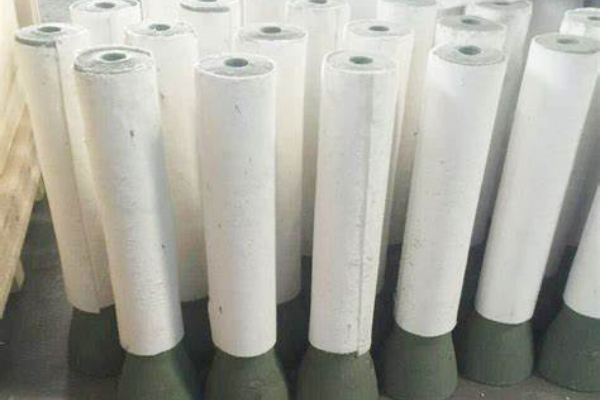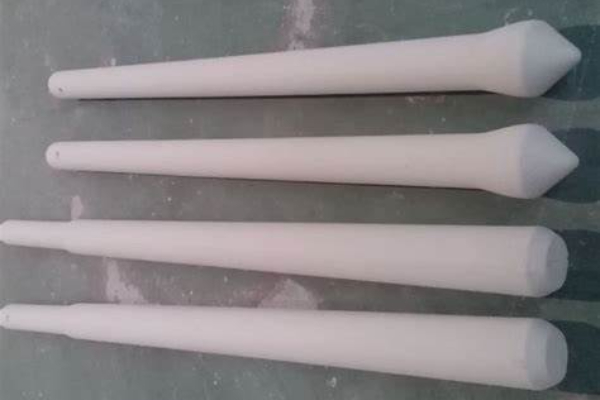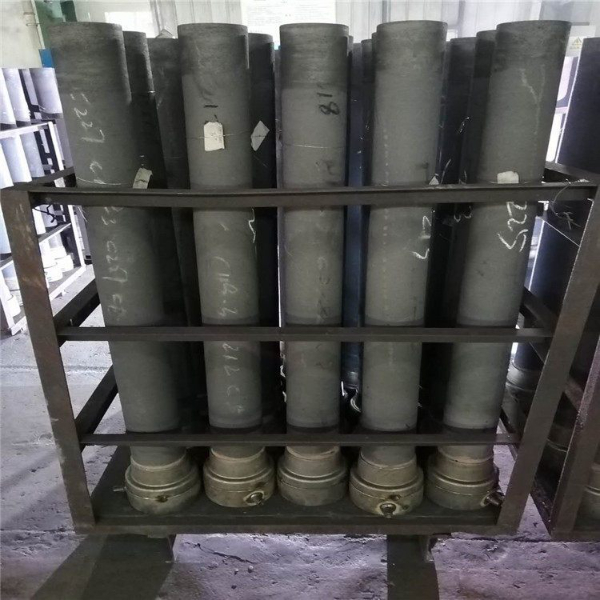Types of refractory raw materials for continuous casting of functional materials
Functional refractory materials for continuous casting refer to the integral plug rod, (ladle) long nozzle, and Submersed nozzle, the three major parts of continuous casting. Some people also include the ladle slide plate, the tundish slide plate, and the tundish nozzle, which are all included. Carbon refractory materials are commonly known as carbon-bonded refractory materials. The tundish slide plate flow control structure has become increasingly rare and tends to be replaced by plug rods.
Types of refractory raw materials for continuous casting of functional materials and material performance requirements
Continuous casting requires its functional refractory materials to have good thermal shock resistance, resistance to synthetic slag erosion, resistance to liquid steel erosion, and appropriate high-temperature strength. These characteristic requirements vary depending on the use of parts, steel types, and smelting conditions of the three major parts.
Submersed nozzle
(1) Excellent thermal shock resistance. The nozzle is generally preheated to 1100°C before use, but the temperature of molten steel during continuous casting is as high as 1500°C. The nozzle needs to withstand a thermal shock temperature difference of 400°C within 1 second.
(2) It has good resistance to mold slag erosion. The zirconium carbon material used in the slag line has enhanced slag corrosion resistance due to the introduction of ZrO2. Аднак, the zirconium carbon material has a risk of thermal shock explosion due to its low carbon content and the phase change of ZrO2. Таму, it is required not to cool down too much after preheating. quick. Адначасова, if the zirconium carbon material is in direct contact with the molten steel in the inner hole, its graphite content and bonding strength are low, and it will be quickly melted under the erosion of the high-speed steel flow. Таму, it must be used in conjunction with the main aluminum carbon material or lining material.
(3) It has good resistance to the erosion of molten steel, especially the inner hole, which must be resistant to both molten steel erosion and chemical erosion. The body part immersed in the crystallizer is rarely corroded, which is the main reason for choosing the aluminum carbon-immersed nozzle.
(4) Good anti-clogging properties. Sedimentation and clogging of the nozzle is a more serious and common problem than the erosion of the inner hole, especially for the pouring of aluminum-killed steel. At present, changing the material and flow pattern is an ideal technical route to solve the clogging problem.
(5) High-temperature strength requirements are particularly important and are higher than those for long nozzles and plug rods. The molten steel cannot fall to the bottom when it hits, and it cannot break when the molten steel swings. Theoretically, the high-temperature flexural strength at 1200℃ is required to reach 2.5MPa. In actual production, the normal temperature flexural strength after burning is controlled to not be less than 6MPa.
Integral Stopper
(1) Добрая ўстойлівасць да тэрмічнага ўдару, but not as demanding as the immersed nozzle and long nozzle, because the stopper rod is only immersed in the molten steel from the outside instead of the inner hole, and the heat transfer is from the outside to the inside; у дадатак, the stopper rod is often packaged with the tundish At the same time, preheating also reduces its thermal shock resistance requirements.
(2) Resistance to slag erosion is not originally a problem for plug rods. Аднак, with the popularization and application of high-alkaline covering agents and the continuous increase in the number of continuous casting furnaces, especially the continuous casting of square billets and round billets requires continuous casting of 20 hours. As mentioned above, the erosion of the plug rod slag line by the tundish covering agent and slag is highlighted. General aluminum carbon materials are difficult to resist. Many manufacturers have compounded zirconium carbon materials, such as zirconium carbon materials for immersed nozzle slag lines and ordinary aluminum. Each carbon material is 50%(w) compounded.
(3) The higher the corrosion resistance of molten steel, the better, especially the rod head material. This is because the rod head area is subject to continuous erosion and erosion by highly turbulent molten steel. Rapid erosion will lead to poor flow control or uncontrolled final pouring. Nowadays, high-quality aluminum carbon materials or zirconium carbon composite materials (applicable to most carbon steels) and magnesium carbon materials (applicable to all steel types, especially high oxygen steel, high manganese steel, calcium-treated steel, and other aluminum carbon materials are not suitable Applicable steel types).
(4) The high-temperature strength index is not required because the wall of the plug rod is relatively thick and has sufficient strength. Таму, almost all manufacturers crush, screen, and dry waste products, waste materials, turning materials, and dust collection recycled materials in the production process. Roast (or burn to remove carbon) and add back into the plug body material, about 50% (w) can be introduced. Since the plug rod needs to be fixed vertically during use and performs high-frequency reciprocating impulses, there are also minimum requirements for strength. Наогул кажучы, the flexural strength of the body material at room temperature after burning should not be less than 4MPa.
Long nozzle
(1) Excellent thermal shock resistance. Long nozzles generally do not need to be preheated and are large, so the thermal shock resistance requirements are the most stringent. There are currently two major technologies to deal with this problem. The first is the inner wall oxidation method in Europe. The long nozzle is fired in the naked firing method. The outside is glazed, the mouth of the bowl is covered, and the inner hole body is in an oxidizing atmosphere, forming an oxide layer of 1 to 2 mm and a metamorphic layer of about 1.5 mm to buffer thermal shock. When the ladle is opened and poured with high-temperature molten steel above 1500°C, it directly impacts the breathable thermal insulation layer, which delays the direct thermal impact on the external aluminum carbon body and ensures thermal shock resistance; the second is the domestically developed thermal insulation inner wall method, which uses alumina or oxide The preformed inner wall of low thermal conductivity materials such as zirconium hollow balls or floating beads also has a good thermal shock resistance effect, but the manufacturing process is slightly complicated. У дадатак, some carbon-free anti-clogging technologies, such as the introduction of lining materials such as mullite, spinel, and calcium zirconate, are not sensitive to the thermal shock of opening and pouring due to the absence of graphite or greatly reduced carbon content. The thermal shock resistance of the nozzle is also improved to a certain extent.
(2) Resistance to slag corrosion. Like the plug rod, the slag wire must be zirconium-carbon composite during long-term pouring.
(3) It has good resistance to the erosion of liquid steel, especially when continuous pouring is required for a long time, the erosion of the steel flow will be serious. It is required to select a material that can provide sufficient thermal shock resistance and corrosion resistance; in the design, it can be considered to treat it differently from the upper part of the body exposed to the atmosphere, diversify and compound it, and effectively control costs.
(4) The strength requirements are also as high as possible. The minimum requirement for the strength of the long nozzle body is that the flexural strength at room temperature after burning reaches 6MPa.
 Фабрыка вогнеўпораў Rongsheng
Фабрыка вогнеўпораў Rongsheng



WeChat
Адсканіруйце QR-код з дапамогай wechat